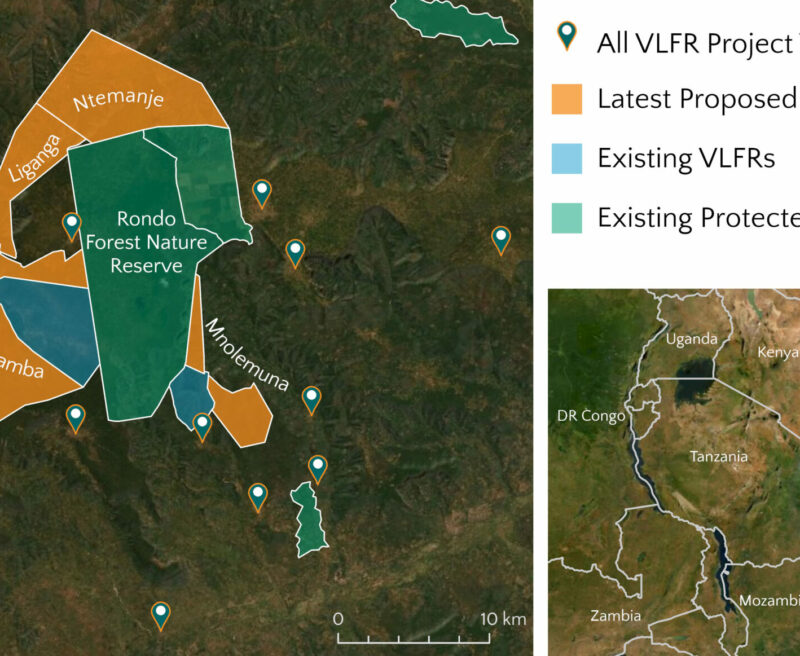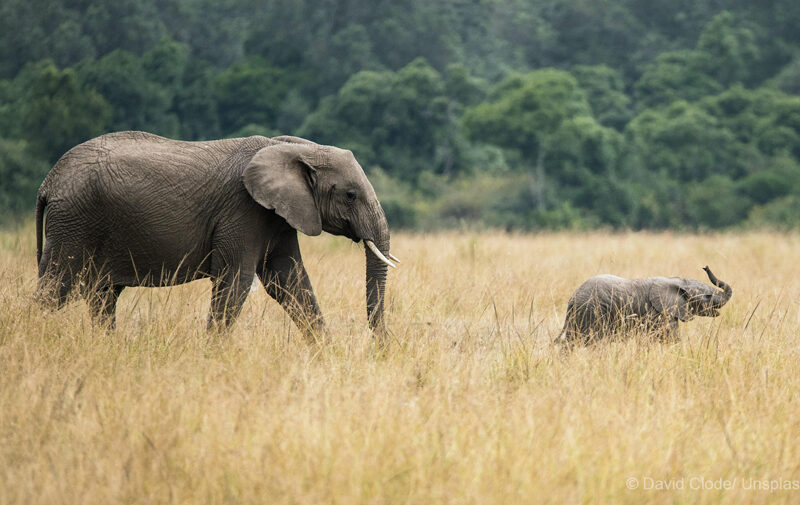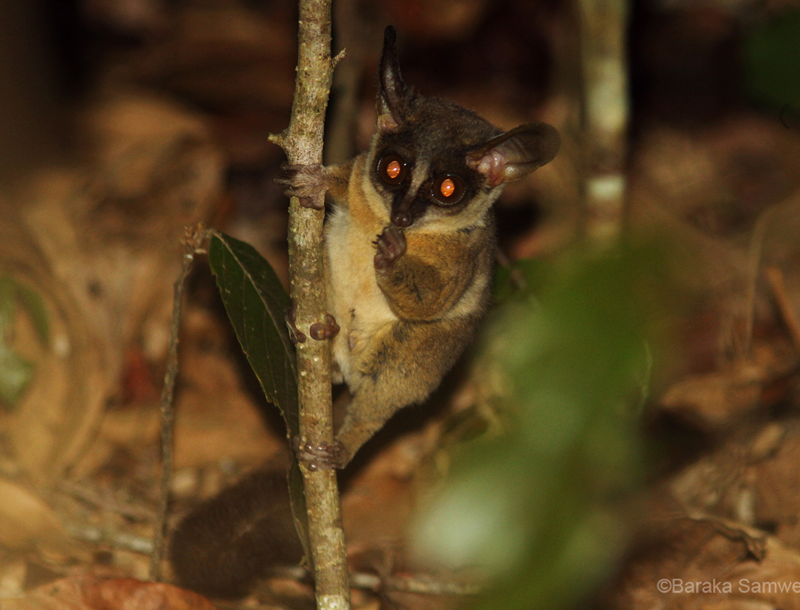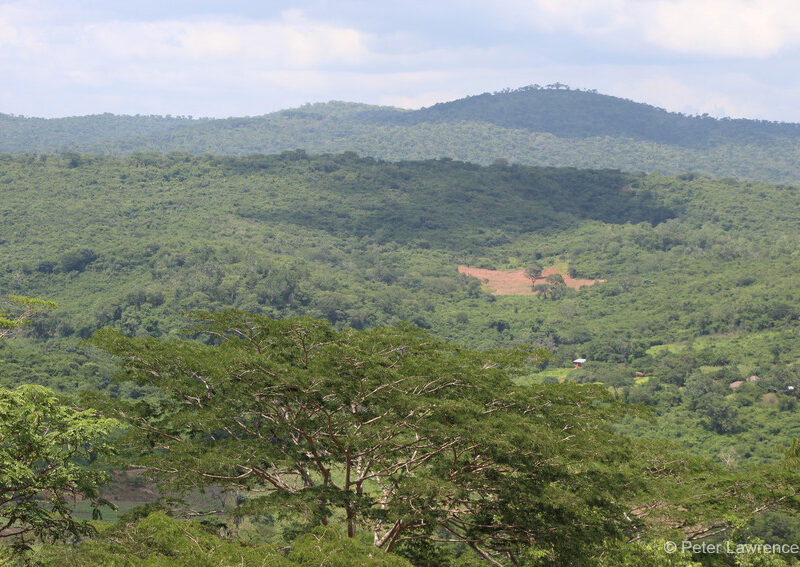DONATION TARGET REACHED – THANK YOU!
With help from your donations, our partner Tanzania Forest Conservation Group (TFCG) can now save one of the most valuable remnants of coastal forest in the country – part of a crucial wildlife corridor for elephant, leopard, lion and more.
Africa has already lost 90% of a little-known global biodiversity hotspot, but in 2021 we have a chance to help save some of the last 10% – with your help.
Rescuing a hub of water and life in Tanzania
Tanzania loses one million acres of forest every year. Now, in the southern Lindi District, road infrastructure is bringing cashew plantations closer to a place we can’t afford to lose.
A 900-metre tabletop mountain, the Rondo Plateau’s elevation is unique among coastal forests in Tanzania and has shaped an extraordinary landscape on two levels: above, a microclimate of misty forests home to minute chameleons and endangered bush baby primates; below, rivers and ponds fed by water trickling through the plateau’s sandy soils, a hub of life for big cats, butterflies and elephant herds.
Researchers who have visited Rondo describe it as a “relic” of east Africa’s once-vast coastal forests.With your help, our partner TFCG will create a colossal, protected belt all around this ancient landscape – read on to discover their plan!
A shared future for people and wildlife: What your donations will achieve
Scientists have documented the spread of deforestation all over the Lindi District, but our partner’s plan brings something crucial to make a difference in this area: connectivity and scale.
Donations to our £360,000 appeal will fund TFCG’s conservation of 49,000+ acres (20,000 ha) of land, helping safeguard part of a crucial – but as of yet unprotected – wildlife corridor between the Rondo Forest Reserve and the Nyerere National Park.
Decades of experience have taught WLT and our partner that conservation must be community-led to succeed in the long run, and so it will be with this plan: the 49,000-plus-acre corridor will come in the form of 10 Village Land Forest Reserves (VLFRs), each one placed under the stewardship of a village with whom TFCG will work closely.
By putting local communities front and centre, TFCG hope to secure a future where people and planet both benefit from a protected Rondo landscape.


A much-needed refuge for embattled elephants
For African Elephants, the future has never looked more uncertain.
In late March, we learned that the IUCN’s first ever red list assessment of the two species across the continent has concluded both are threatened with extinction. Savanna elephants – the variant found in southeastern Tanzania – have been uplisted from Vulnerable to Endangered, following a 60% drop in their populations in the past 50 years, the IUCN has found.
These are threats that the savanna elephant herds all around the Rondo Plateau are not escaping. Research has shown that north of the Plateau, deforestation and development are closing in on two critical elephant migration routes, forcing the wandering giants into conflict with humans.
With corridors closing elsewhere, these elephants urgently need a safe place to roam, feed, and raise their young – a gift that WLT supporters can give. By donating to our new campaign, you can make sure the Rondo route remains open to migrating elephants for generations to come.
Why it matters to protect Rondo’s big cats
Nurture a healthy predator population, and a healthy ecosystem will follow. On the Rondo Plateau, the African Lion and African Leopard play a key role in managing prey species.
Without big cats, crop-raiding animals like the African Bush Pig would also be left unchecked, free to devastate local farms.
The lions of the Rondo Plateau are a shadow of the large prides seen on the Serengeti. Already absent from some reserves in the area, groups of more than three are rare here.
Rondo’s lions rely on the interface between forest and shrubland to hunt. If deforestation continues, there is a real danger they could become locally extinct.
Leopards also need forests to survive here. Less powerful than their lion cousins, Panthera pardus must store their kills high up in the trees, away from scavengers.


The tiny “super specialists” you can save
Found only in nine isolated forests scattered across Tanzania, this tiny tree-dwelling creature is one of the world’s most endangered primates. With your help, TFCG’s planned 10 reserves will add a buffer zone all around the Rondo Forest Reserve, a gift of connectivity for one of the last viable homes of this imperiled species.
Often found grasping plant stems in the shrub layer, Rieppeleon brevicaudatus is an expert at mimicking dead leaves. Migration, however, is out of the question. At a mere 8cm long, this slow-moving reptile is extremely vulnerable to habitat disruption – a few felled trees could be an irreparable loss for many.
Also known as the Chequered Sengi, this mammal is more closely related to elephants than shrews and boasts a long snout worthy of its namesake. Its population is severely fragmented due to habitat loss, and the subspecies restricted to Tanzania’s dwindling coastal forests is under particular pressure.
Coastal forests: a floral wonderland
Each one of East Africa’s coastal forest fragments has its own extraordinary evolutionary history – the list of plant species in two forests just 100km apart can differ by as much as 80%!
A fifth of all coastal forest plants are endemic to this biodiversity hotspot, while 39% within this endemic group are confined to their own individual forests.
The area in and around TFCG’s proposed 10 reserves is teeming with life – 295 plant species are found here, including 16 coastal forest endemics and 30 endangered species.
One such species is Gigasiphon macrosiphon – the most recent survey found fewer than 50 specimens across the plant’s entire range in Kenya and Tanzania’s coastal forests.
An intriguing plant specimen from the Rondo Plateau, currently being verified, is thought to represent the species Diospyros magogoana. Classified as ‘Critically Endangered, Possibly Extinct’, it hasn’t been seen since the 1950s!


Enriching lives and supporting local leadership
“The people of the Rondo Plateau really are at the core of this project. Far more than just repositories of local knowledge, these communities are the traditional stewards of the land – their land – and so they will remain. Each village will decide the parameters of their own reserve, while a village-run Natural Resource Committee will oversee sustainable community forest management.
“If we can count on your support, the villagers surrounding the Rondo Plateau can look forward to innovations like climate-smart agriculture, as well as savings and loans associations that will improve local livelihoods. In a district like Lindi characterised by high levels of poverty, where at least 84% of the population are engaged in subsistence agriculture, our project promises to be truly transformative.”
– Mary McEvoy, Project Manager at World Land Trust